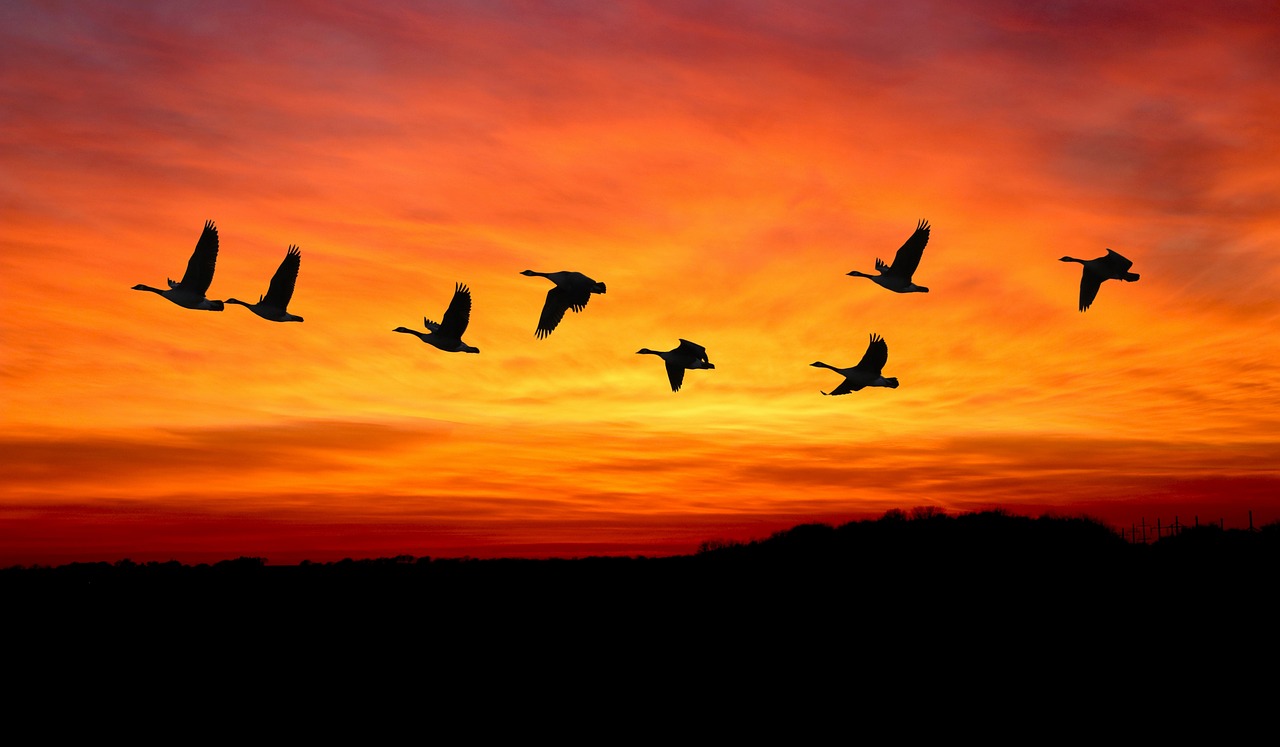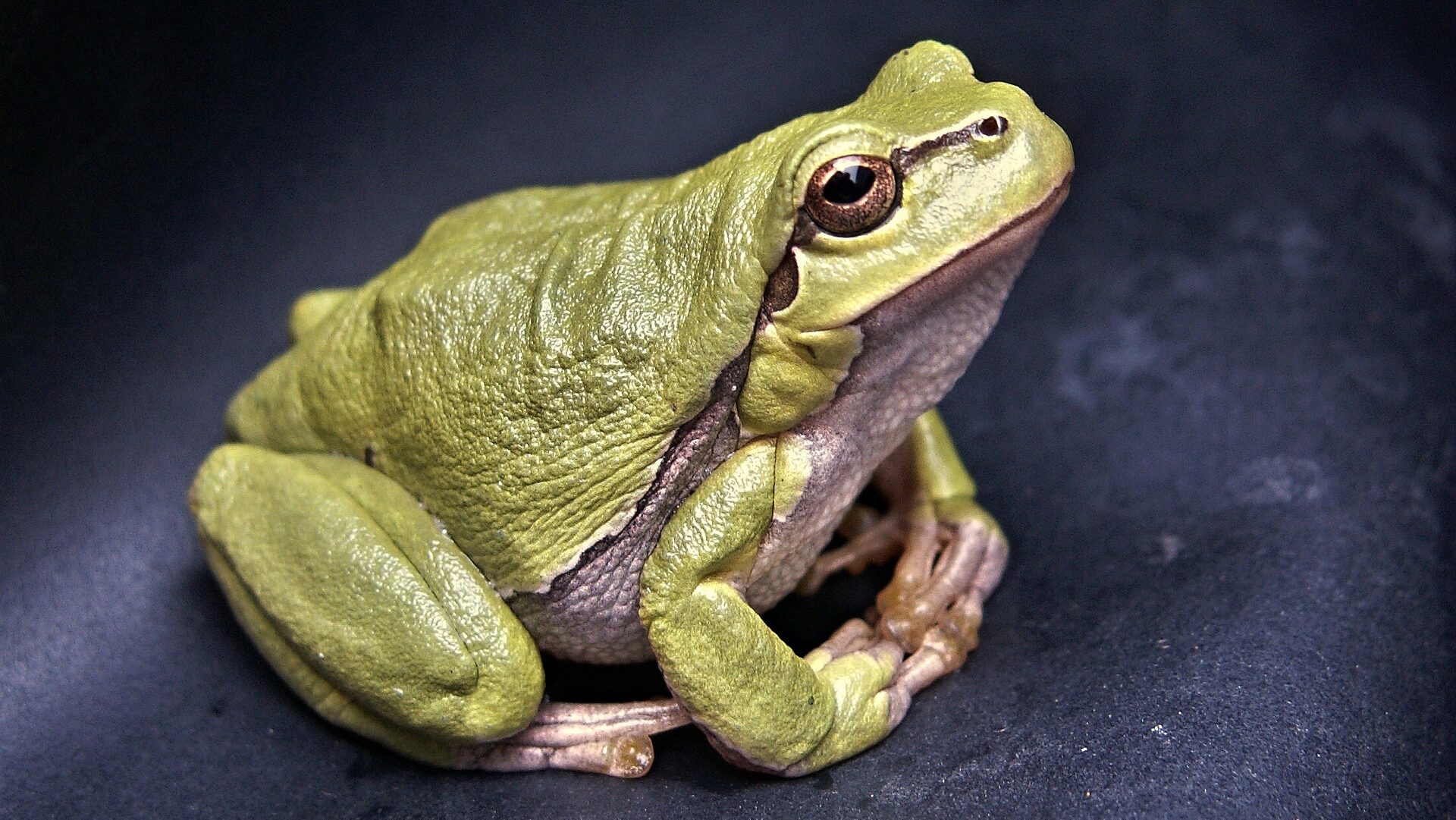Reading Time – 10 Minutes, Difficulty Level 1/5
Every year around April, the Arctic tern, weighing just four ounces, begins one of the most extraordinary displays of endurance in nature. Undertaking one of the longest migrations in the world, the formidable bird travels from Antarctica to its breeding grounds in the Arctic Circle and then back to Antarctica, traveling up to 56,000 miles (90,000km) yearly. While the distance traveled by the Arctic tern is unusual, the yearly seasonal migration spanning continents and oceans is not unique in the bird world. Why do some birds do this? How do they know when to migrate? Where do they go? How do they know to do this? All these questions, and more, have plagued observers and researchers for millennia.
What is Migration?
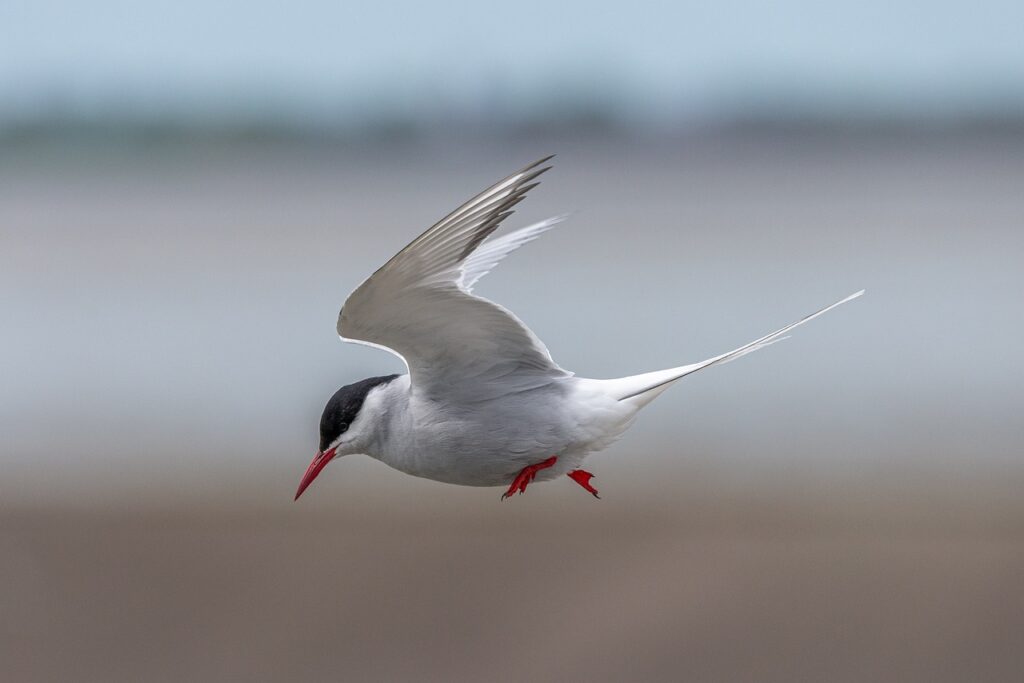
For birds, the term ‘migration’ typically refers to predictable, seasonable large-scale movement from one area to another, followed by a later return to the original location. Of the approximately 10,000 bird species in the world, nearly half migrate to some extent, while an estimated 1,800 species undergo long distance migration. Short-distance migrants typically make mainly overland journeys within continents, while long-distance migrants undergo transcontinental crossings and/or substantial sea crossings.
In this article, we will focus on the why and how of a typically imagined long-distance bird migration from a temperate or tropical ‘winter’ spot to a higher latitude to spend the summer and raise young.
Why Migrate?
Both short and long-distance migration carries high investment and high mortality. Why would migratory birds, some weighing less than a paperclip, take on such a dangerous journey, not only once, but twice yearly? The benefits gained by migrating long distances must outweigh the higher investment costs, such as higher energy costs and the risk of starvation, injury, and death involved in moving such great distances.
Research suggests the availability of food is the main driver for both spring and fall migration in birds. In spring, the pressure to migrate is amplified by the need to build a nest and raise young. This requires nest sites and reliable sources of food to give fledglings the best chance of survival (a ‘fledging’ bird is defined as a young bird that has acquired the necessary feathers for flight or independent activities and has left the nest).
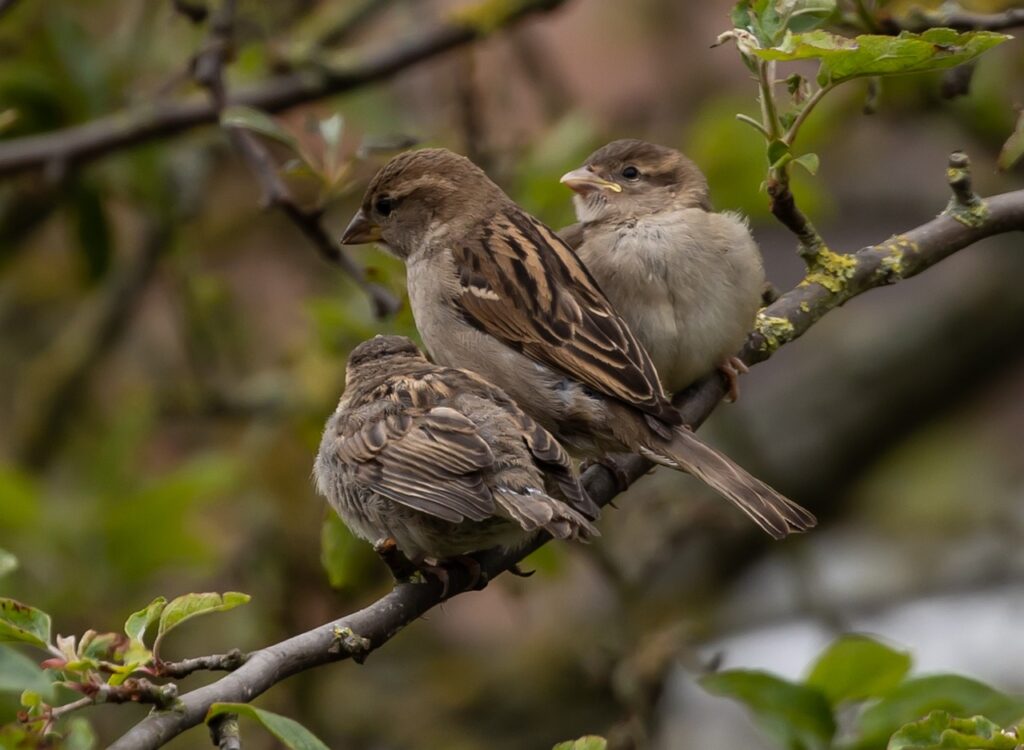
For many species, access to nest sites and reliable food sources is better accomplished by moving from a temperate or tropical climate (a wintering location) to a higher latitude location (a summer or breeding location). A higher latitude location can provide a better location than tropical or temperate locations to raise young birds for many reasons that are outlined below:
- Reduced competition for resources. To rear young birds, parents need high-quality spots to build nests, along with an abundance of food to feed themselves and their offspring. As insect and plant populations wake and blossom in spring at the higher latitudes, migrating birds arrive to exploit the abundance of available food. In addition, the low bird census in winter at high latitudes translates to a lack of competition for nesting sites in the spring. As species richness increases with decreasing latitude, if these birds were to stay behind in temperate and tropical locations, they would be competing with large numbers of resident birds for both food and nesting sites, which would likely decrease the success rate of raising a family.
- Reduced risk from predators. With increasing latitude, pressure from predators decreases, as there are fewer predators present to raid nests and prey on newly hatched young. This leads to increased success at nesting, hatching, and fledging young birds, which in turn translates to a successful nesting season and higher overall bird population numbers.
- Longer daylight hours. In the summer months, the amount of daylight hours increases with increasing latitude. The long days (and in the very far extreme latitudes – constant daylight) allow for a longer period for birds to hunt for food, increasing their yields and allowing them to feed their young more effectively. Again, this increases the chances of both a successful nest and for those nestlings to survive once out of the nest.
Migration Mechanics
How does such a creature know when to migrate, and how are they able to find their way there and back again (in some cases to the same nesting site every year)? Until recently, research in this area has been hindered by the inability to fit smaller migratory birds with transmitters small enough for them to carry. However, many recent advances in technology are changing this, and researchers are improving their knowledge about how and when birds migrate. Currently, research has shown much of the mechanics of migration appear to be genetically innate, however, birds fine-tune the timing and journey as they gain experience.
- How Does a Bird Know When to Migrate?
Arrive too early to an Arctic breeding ground and frozen tundra may mean no food or place to nest. Conversely, arrive too late, and the bird may miss out on valuable mate-finding and nest-building time.
So how do birds know when to begin their migration to their breeding grounds?
The short answer is many nuances (including genetics and hormones) govern both individual and species-specific triggers for initiating migration, but lengthening hours of daylight occurring in spring appears to be one of the largest influencers across species and individuals. Special photoreceptors located in the brain track this increase in daylight, which triggers a cascade of other body changes in preparation for migration. Birds molt, growing new feathers for flight, and fatten themselves up in preparation for the arduous task of long-distance flight.
As this process completes, in some birds, a hormone called ghrelin, produced in the stomach, stimulates restlessness and is thought to help drive migration. Fall migration triggers are less understood, but decreasing daylight appears to play less of a role. Instead, decreasing food supplies appears to be a more pressing force, encouraging migration back to their tropical or temperate location.
- Birds of a Feather (often) do Flock Together
Many birds migrate in flocks of the same or closely related species; a few even migrate as families (cranes, geese). Many of the larger-bodied bird species not only flock together but fly in the traditionally-imagined V-formation (e.g. geese and pelicans). This V-formation is beneficial because it reduces energy expenditures for those birds flying behind the leader. In a V-formation, the leading bird creates turbulent air behind each wing flap. The following birds ride the lift of this turbulent air, which reduces their energy expenditure. Once the leader tires, he/she will fall behind into the V, and a new leader will take over. Traveling in this manner, birds save an estimated 20-30% of their energy compared to those flying solo.
Flocking together has several other benefits, such as predator avoidance (much greater chance of spotting a predator when more eyes are watching), communal warmth, and better ability to find food (again, more eyes searching leads to higher success).
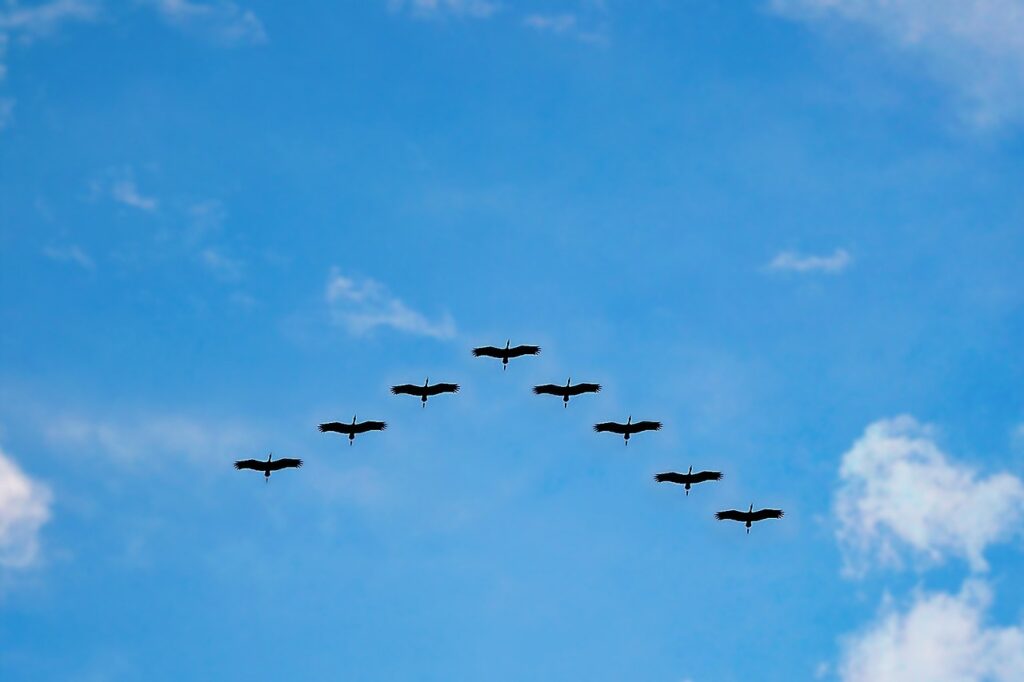
- Night Migration
Most species migrate at night. Traveling at night gives migrating birds, particularly smaller songbirds, several advantages. Nighttime air is more stable, free from the influence of daytime thermals, which allows for a more consistent flight path. Many birds also use the stars and moon as navigation cues. There are fewer predators, such as hawks, in the nighttime sky. Air temperatures are also much cooler, which helps limit overheating during heavy exertion. Most recent research also suggests that birds need darkness to see the Earth’s magnetic field, an important navigational tool that many birds use to detect north and south.
- How do they find their way? First-time migrants must rely on instincts.
Many, if not most, migratory birds are thought to have an innate genetic blueprint that gives them a basic instinct of what direction to travel. Young, newly hatched birds on their first migration must rely on this innate direction, and in some species, young birds will also follow more experienced companions. In a few species, such as cranes and geese, young new migrants will follow their parents and learn their migration routes in this manner. This innate direction, or internal compass, has been the subject of much research. The internal compass has been proposed to be celestial (the sun, and for nighttime migrants – the stars) and/or even geomagnetic. The ability to feel the Earth’s magnetic field and alter their direction with respect to changes in the magnetic field has been well-documented in birds, but the question of how they do this has plagued researchers.
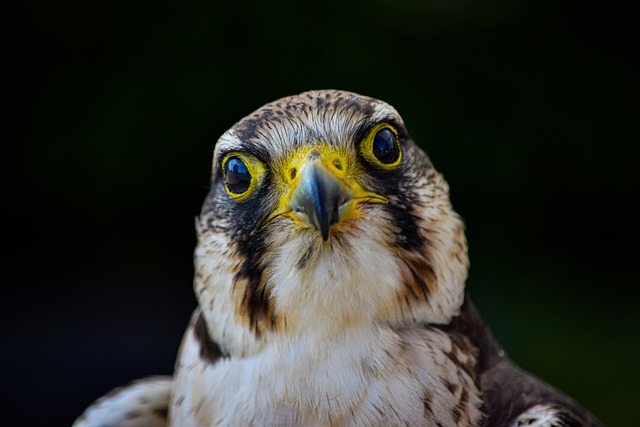
Most recently, scientists have proposed unique light-sensing proteins, called cryptochromes, present in bird’s eyes can detect the orientation of Earth’s magnetic field. These cryptochromes allow birds to ‘see’ the magnetic field and orient their flight plans according to their position relative to the Earth’s magnetic field. This internal compass helps birds know which direction to travel, but it is not the only sense birds use to navigate.
On their first migration, birds will use a variety of other senses to add environmental cues along the way, which helps build a detailed map. Many birds use landmarks such as mountain ranges and rivers, and others also rely heavily on their noses, picking up smells on their journey. Combining the instinctual navigation systems with the environmental cues allows experienced migrants to develop a precise map, capable of reproducing a journey to the centimeter. Experienced migrants exhibit true navigation and nest site fidelity – they correct for wind drift and other displacements that may occur along the way, and return yearly to the same nesting spot.
While many of the mechanisms regarding how and why birds migrate are still debated, the fact remains that bird migration is a feat of endurance and arguably one of the greatest exhibitions in the natural world. It plays a crucial role in the survival of many bird species and has cultural and economic significance. However, migratory birds face an array of challenges, including habitat loss and climate change. These extraordinary journeys stress the need for habitat conservation and environmental protection to support birds and insure their legacies.
Sources
Åkesson, S., & Bianco, G. (2017). Route simulations, compass mechanisms and long-distance migration flights in birds. Journal of Comparative Physiology A, 203(6-7), 475-490.
Bingman, V. P., Able, K. P., & Kerlinger, P. (1982). Wind drift, compensation, and the use of landmarks by nocturnal bird migrants. Animal Behaviour, 30(1), 49-53.
Gilg, O., & Yoccoz, N. G. (2010). Explaining bird migration. Science, 327(5963), 276-277.
Holland, R. A. (2014). True navigation in birds: from quantum physics to global migration. Journal of Zoology, 293(1), 1-15.
McKinnon, L., Smith, P. A., Nol, E., Martin, J. L., Doyle, F. I., Abraham, K. F., … & Bêty, J. (2010). Lower predation risk for migratory birds at high latitudes. Science, 327(5963), 326-327.
Muijres, F. T., & Dickinson, M. H. (2014). Fly with a little flap from your friends. Nature, 505(7483), 295-296.
Xu, J., Jarocha, L.E., Zollitsch, T. et al. Magnetic sensitivity of cryptochrome 4 from a migratory songbird. Nature 594, 535–540 (2021). https://doi.org/10.1038/s41586-021-03618-9

I’m Cheryl Haines and I’m passionate about all things biology and public health. I have a diverse background within that – an M.Sc. in Ornithology, an M.P.H. in Environmental Epidemiology, with time spent teaching and in healthcare. I love to encourage curiosity and hope to instill a sense of wonder about science in my readers.

